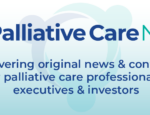A look back at Palliative Care News’ five most-read stories this year paints a picture of trends shaping the serious illness care space. Securing reimbursement — and the promise of value-based contracts — continues to be top of mind for many palliative care providers as they look ahead to 2024. Operators have their eyes on […]
Center for Medicare & Medicaid Innovation
Providers see sustainability and expanded service growth as main draws to participating in the Medicare Advantage hospice carve-in. However, these opportunities come alongside administrative and billing challenges, among others. Hospice participation in the value-based insurance design (VBID) model has been slowly increasing over the past two years, a trend anticipated to continue as more providers […]
Palliative care providers may be uniquely positioned to develop partnerships that support patients through the new Guiding an Improved Dementia Experience (GUIDE) Model recently unveiled by the Center for Medicare & Medicaid Innovation. While the program is not a palliative care model, those providers are well-suited to deliver the kind of care that GUIDE outlines. […]
Health plan participation in the hospice component of the value-based insurance design model (VBID) will fall in 2024. For calendar year 2024, 13 Medicare Advantage Organizations (MAOs) will participate in the program’s hospice component, providing coverage through 78 health plans in 19 states. In 2023, 15 MAOs participated in hospice VBID, including 119 health plans […]
The U.S. Centers for Medicare & Medicaid Services (CMS) is making significant changes in 2024 to the Accountable Care Organization Realizing Equity, Access and Community Health (ACO REACH) payment model. The updates include the introduction of a new approach to payment designed to enhance care delivery and care coordination for patients in underserved communities, according […]
Past payment model demonstrations that included community-based palliative care offer a window into how these services could generate cost savings and improved quality. Among those demos is the Medicare Care Choices Model (MCCM), which ran between 2016 and 2021. The model illustrated palliative care’s potential for driving down health care costs for seriously ill patients, […]
The health care space — including hospice — is increasingly shaped by numbers. During the past several years hospice providers have had to become experts in data management in order to remain competitive. Data has become invaluable to negotiations with referral and payer sources, as well as to regulatory compliance. But providers can also benefit […]
The Kidney Care Choices (KCC) model is among the reimbursement streams that is widening payment for palliative care services. It could also help improve utilization of serious illness and end-of-life care. Patients with chronic kidney disease can often receive fragmented care and expensive treatments. They also receive limited to no education about their health trajectories, […]
A new cancer-focused payment model demonstration from the Center for Medicare & Medicaid Innovation (CMMI) could create opportunities for palliative care providers. The goals of the Enhancing Oncology Model (EOM), which went live on July 1, are to improve quality and reduce the cost of cancer care with augmented care coordination. While documents on the […]
When deployed at scale, palliative care can help achieve many of the health care systems current goals, including reduced costs, improved patient satisfaction and quality of life. Despite this potential, existing programs hit barriers created by misconceptions about palliative care among referring physicians, as well as health equity concerns, among others, according to an analysts […]







